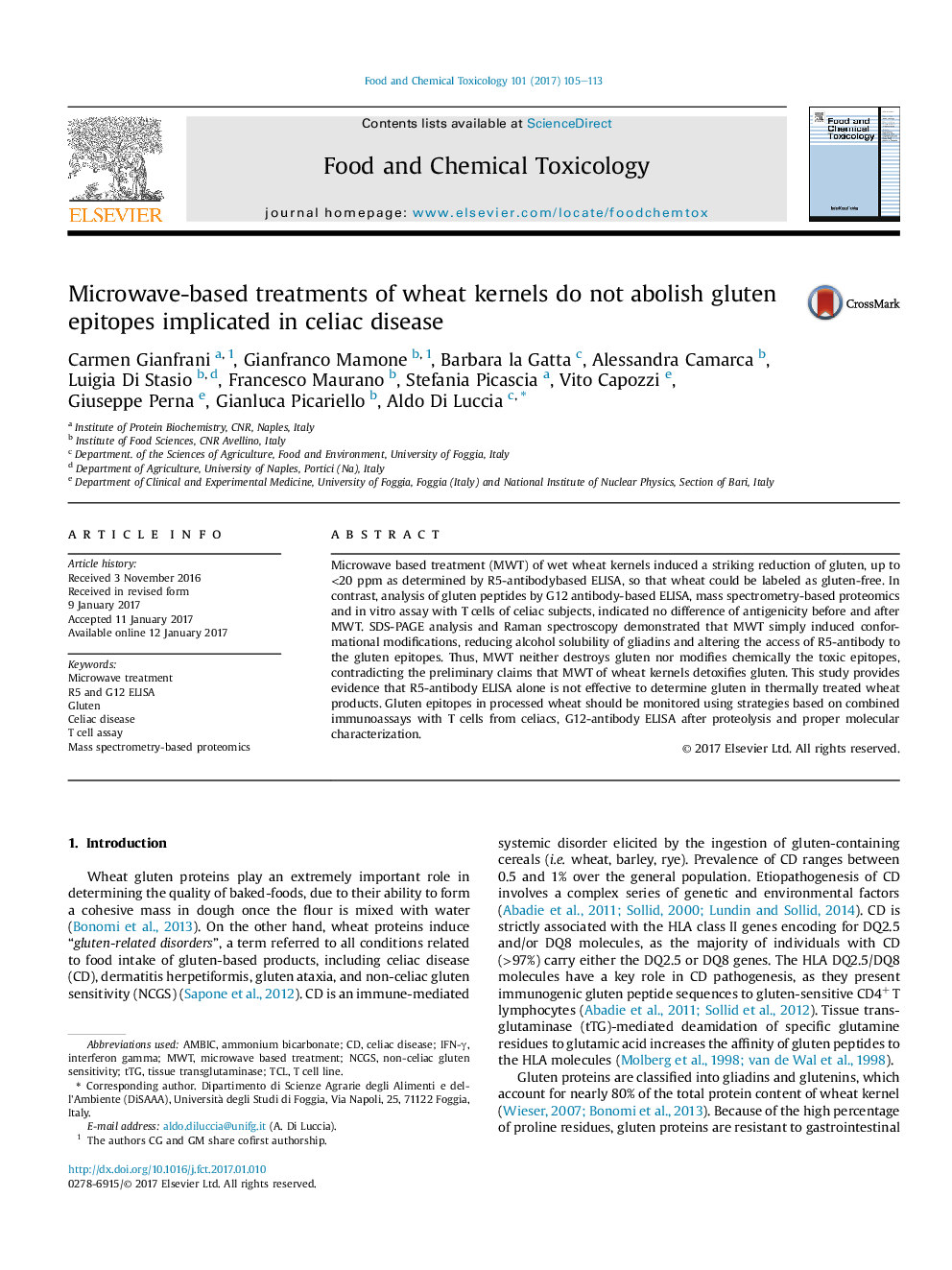| Article ID | Journal | Published Year | Pages | File Type |
|---|---|---|---|---|
| 5560389 | Food and Chemical Toxicology | 2017 | 9 Pages |
â¢Microwave based treatment affects the R5-ELISA detection, but not the T Cell immunostimulatory properties of whole gluten.â¢Microwave based treatment neither destroy gluten nor modify chemically the celiac disease toxic epitopes.â¢Microwave based treatment induced conformational modifications, altering the access of R5-antibody to the gluten epitopes.â¢Gluten assessment by R5-ELISA alone does not provide a definite response, when assaying thermally treated food.
Microwave based treatment (MWT) of wet wheat kernels induced a striking reduction of gluten, up to <20 ppm as determined by R5-antibodybased ELISA, so that wheat could be labeled as gluten-free. In contrast, analysis of gluten peptides by G12 antibody-based ELISA, mass spectrometry-based proteomics and in vitro assay with T cells of celiac subjects, indicated no difference of antigenicity before and after MWT. SDS-PAGE analysis and Raman spectroscopy demonstrated that MWT simply induced conformational modifications, reducing alcohol solubility of gliadins and altering the access of R5-antibody to the gluten epitopes. Thus, MWT neither destroys gluten nor modifies chemically the toxic epitopes, contradicting the preliminary claims that MWT of wheat kernels detoxifies gluten. This study provides evidence that R5-antibody ELISA alone is not effective to determine gluten in thermally treated wheat products. Gluten epitopes in processed wheat should be monitored using strategies based on combined immunoassays with T cells from celiacs, G12-antibody ELISA after proteolysis and proper molecular characterization.
Graphical abstractDownload high-res image (166KB)Download full-size image
